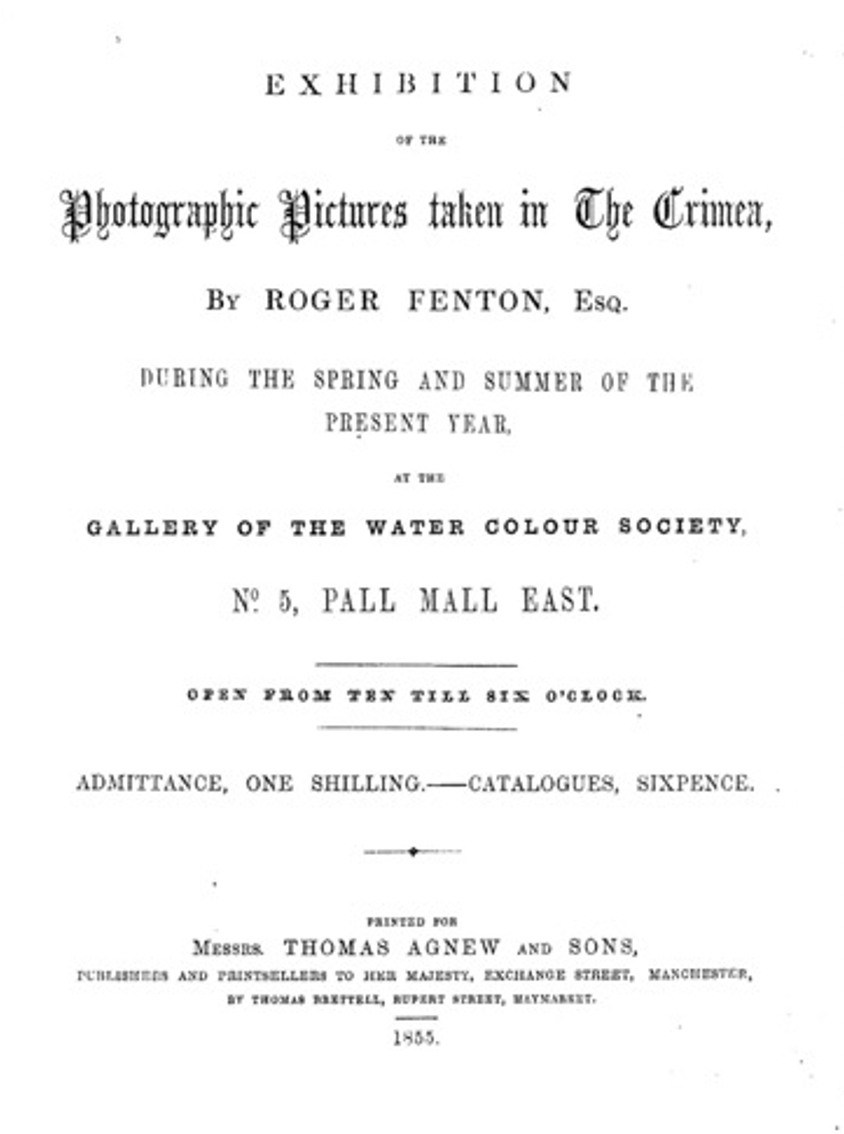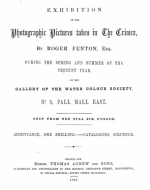Created by Peter Hoffenberg on Sun, 05/23/2021 - 12:10
Description:
Roger Fenton’s photographs were published by Agnew and Sons of Manchester in five portfolios under the title, Photographs Taken Under the Patronage of Her Majesty the Queen in Crimea by Roger Fenton, Esq. Portfolio groupings were: “Incidents in Camp Life,” “Historical Portrait Gallery,” “Views of the Camps,” and panoramas of Sebastopol and Balaclava (Gernsheim, The Rise of Photography, 1850-1888 92-95). It was not unusual for contemporaries to gossip that the exhibitions were part of a strategy to advertise and sell these photographic albums. Mathew Brady sold similar ones at the time of the American Civil War less than ten years later (Trachtenberg, “Albums of War,” passim). There was without doubt a business side to Fenton’s exhibitions, and no one was shy about it, least of all Fenton, who was not anywhere near above and beyond self-promotion. The Catalogue included prices and an order form. Subscribers could choose one or more from the following categories: “Scenery,—Views of the Camps, &c.,” “Incidents of Camp Life,—Groups of Figures, &c.,” “Historical Portraits,” and “Miscellaneous Subjects,” for which the potential purchaser was advised to “See Catalogue” (“Exhibition of the Photographic Pictures taken in The Crimea” 16-17).
Works Cited
Exhibition of the Photographic Pictures taken in The Crimea, By Roger Fenton, Esq. During the Spring and Summer of the Present Year, at the Gallery of the Water Colour Society, No. 5, Pall Mall East. London: Messrs. Thomas Agnew and Sons, 1855.
Gernsheim, Helmut. The Rise of Photography, 1850-1880: The Age of Collodion, The History of Photography, Volume II. London: Thames and Hudson, 1988.
Trachtenberg, Alan. “Albums of War: On Reading Civil War Photographs.” Representations 9 (Winter 1985): 1-32
Copyright:
Associated Place(s)
Timeline of Events Associated with Title Page, Photographs Taken Under the Patronage of Her Majesty the Queen in Crimea by Roger Fenton, Esq.
Artist:
- Roger Fenton


